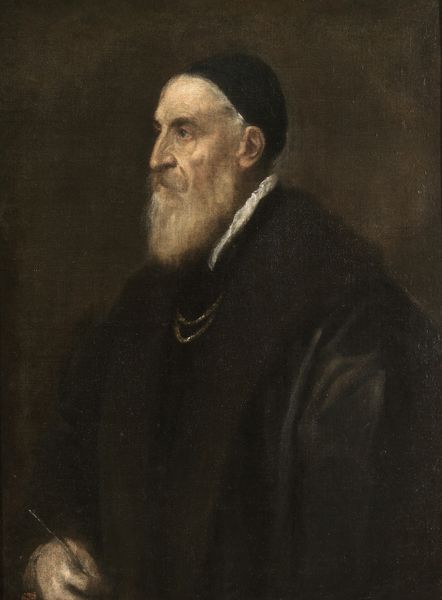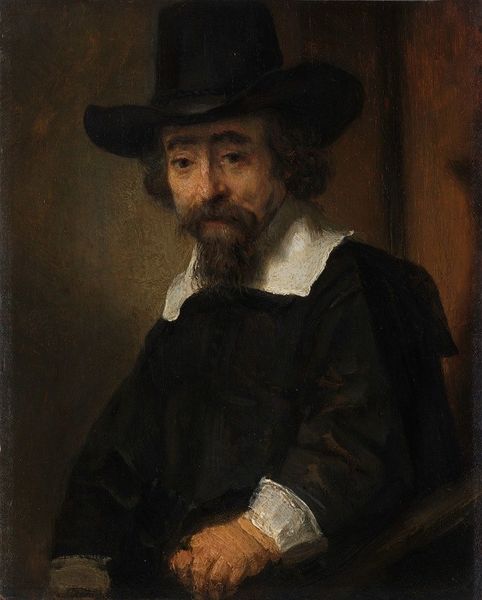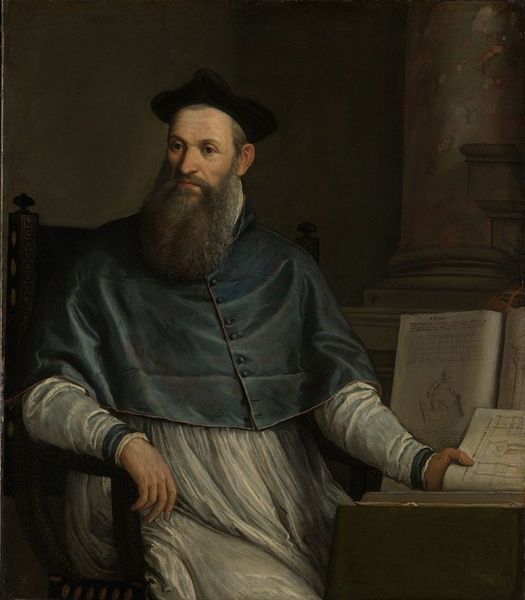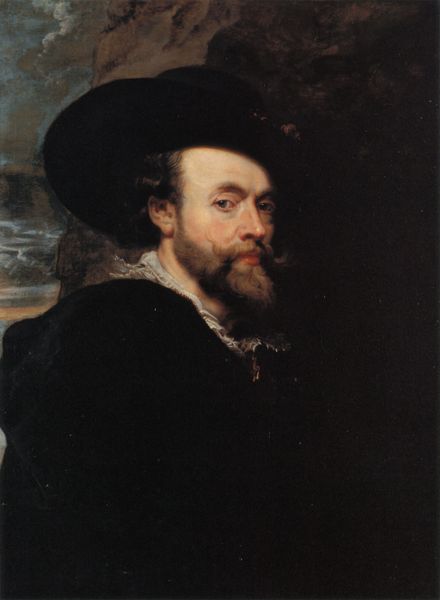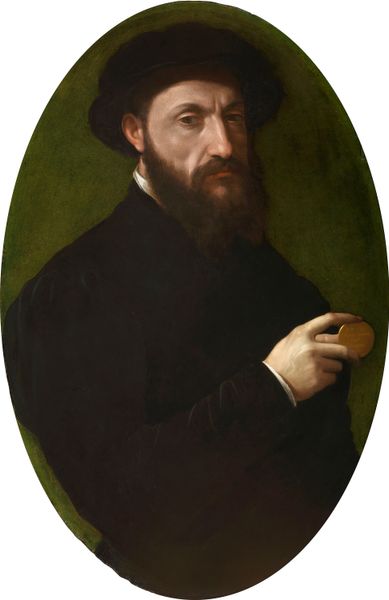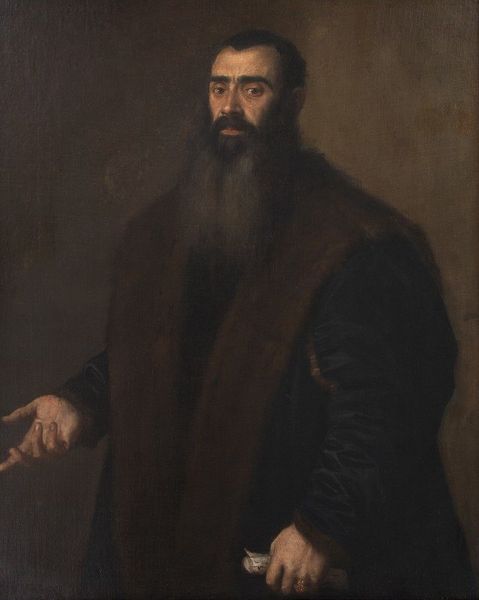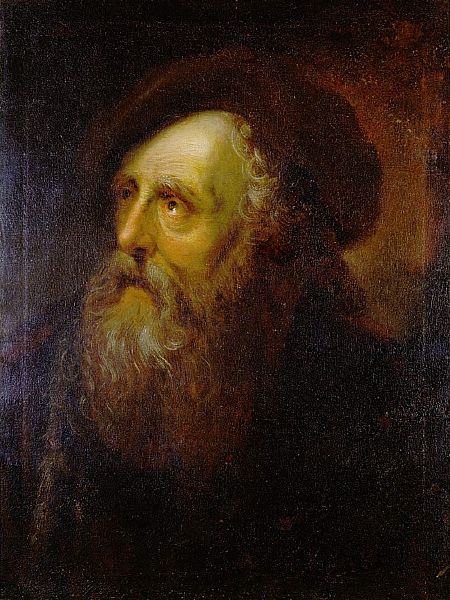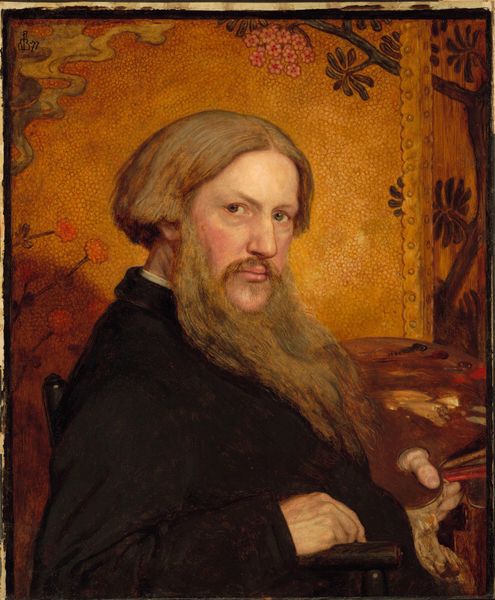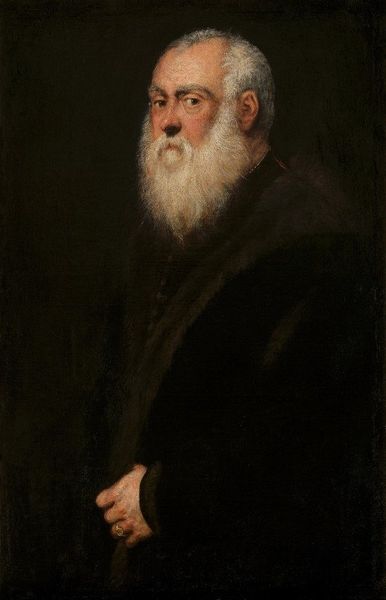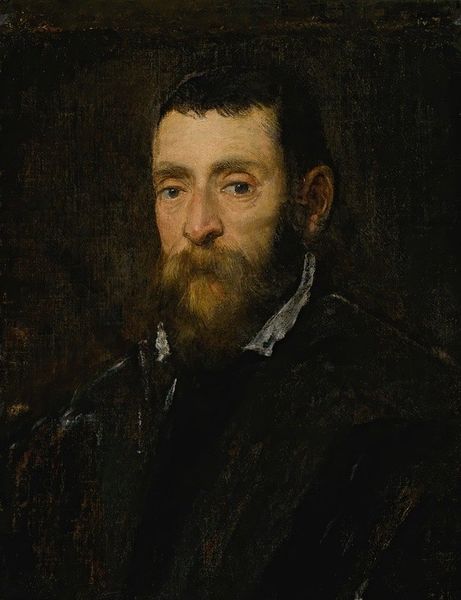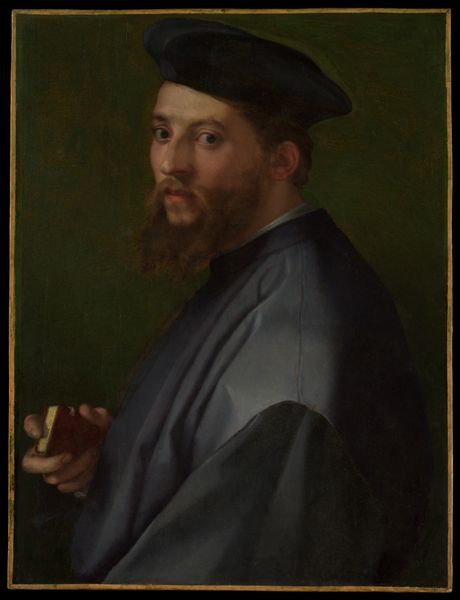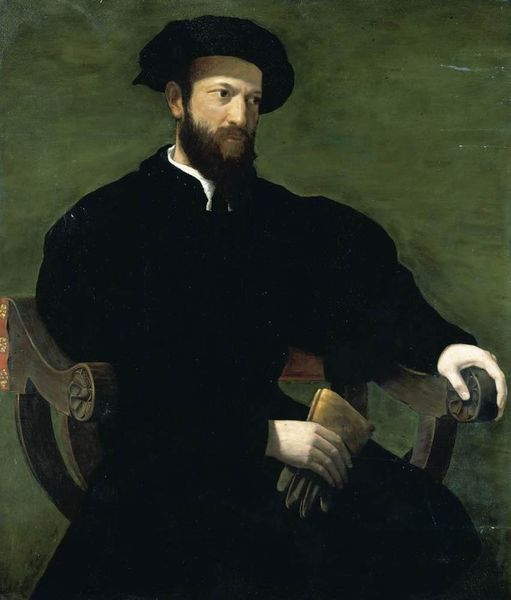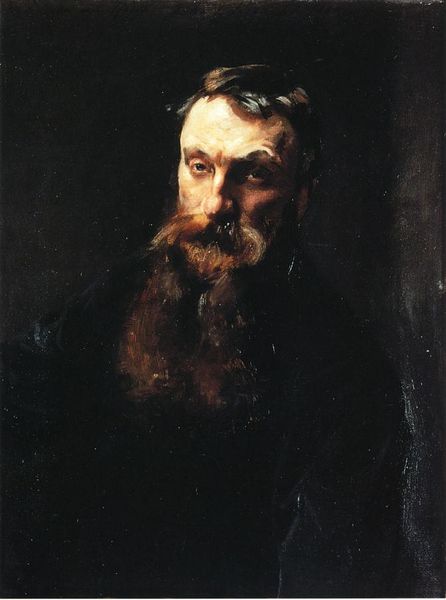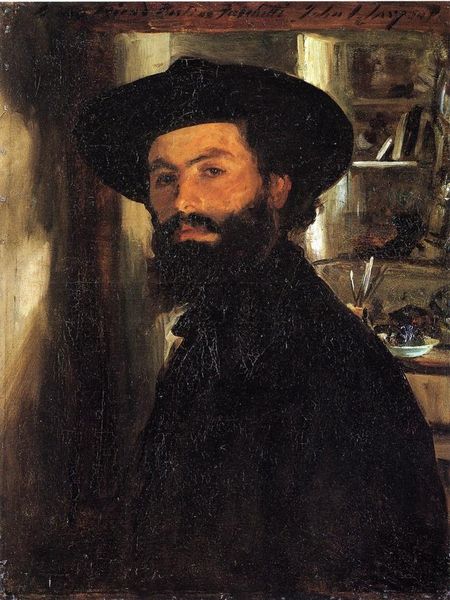
Dimensions: support: 648 x 521 mm frame: 990 x 863 x 90 mm
Copyright: CC-BY-NC-ND 4.0 DEED, Photo: Tate
Editor: Here we have George Frederic Watts' Self-Portrait, housed at the Tate. The somber tones and the sitter's intense gaze give it such a serious, almost prophetic mood. What symbols stand out to you in this piece? Curator: His hat and beard are visual cues, aren't they? The hat, a mark of the artist, suggests a contemplative presence, while the beard evokes wisdom and experience. What do you think he is trying to convey about his role in society? Editor: Perhaps he's positioning himself as a seer or a philosopher through these symbols. It's intriguing how clothing, even in painting, can construct such meaning. Curator: Precisely. Artists often use these visual languages to tap into shared cultural understandings. It's about imbuing the image with a sense of timeless significance. Editor: So, understanding these symbols helps us grasp the artist's intention and the painting's broader message. Thanks! Curator: Indeed, and it also reveals how artists connect with their viewers across time through shared visual vocabulary.
Comments
Join the conversation
Join millions of artists and users on Artera today and experience the ultimate creative platform.
tate 6 months ago
⋮
This is one of a number of half-length self-portraits by G F Watts, who was one of the greatest portrait painters of the Victorian era. In this picture he assumes the attitude of the bohemian artist, wearing a dark slouch hat and black velvet coat. This style of dress reflects Watts’s life with his friends, the Prinseps, at Little Holland House in Kensington where he lived from 1850 until 1875. Watts later wrote ‘I paint myself constantly, that is to say whenever I want to make an experiment in method or colour and I am not in the humour to make a design’. Gallery label, August 2004
